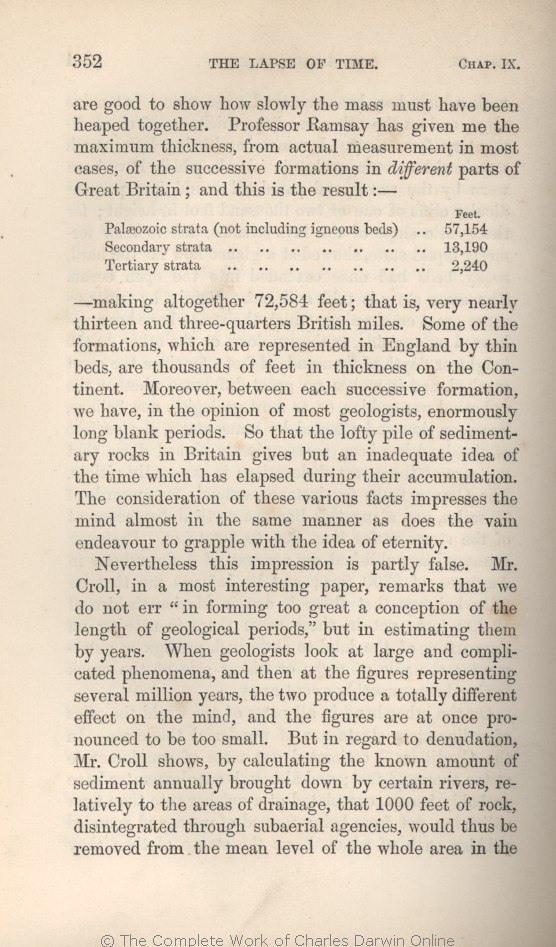are good to show how slowly the mass must have been heaped together. ↑| 2 blocks not present in 1869 1872; present in 1859 1860 1861 1866 | | Let him
remember Lyell's profound remark,
that the thickness and extent of sedimentary formations are the result and measure of the degradation which the earth's crust has elsewhere suffered.
And what an amount of degradation is implied by the sedimentary deposits of many countries! |
| .. .. .. .. .. .. 1869 |
| OMIT 1872 |
| .. .. .. .. .. .. 1869 |
| OMIT 1872 |
| the 1860 1861 1866 1869 1872 | | these 1859 |
| enormously long 1859 1860 1861 1866 1869 | enormously long 1872 |
| periods. 1859 1860 1861 1866 1869 |
| periods of enormous length. 1872 |
| Britain 1866 1869 1872 | | Britain, 1859 1860 1861 |
| accumulation. 1869 1872 | | accumulation; 1859 1860 1861 1866 |
| ..... 1869 1872 | | yet 1859 1860 1861 1866 |
| ..... 1869 1872 | | what 1859 1860 1861 1866 |
| ..... 1869 1872 | | time 1859 1860 1861 1866 |
| ..... 1869 1872 | | this 1859 1860 1861 1866 |
| ..... 1869 1872 | | must 1859 1860 1861 1866 |
| ..... 1869 1872 | | have 1859 1860 1861 1866 |
| ..... 1869 1872 | | consumed! 1859 1860 1861 1866 |
| 1 blocks not present in 1869; present in 1859 1860 1861 1866 1872 | | Good observers have estimated that sediment is deposited by the great Mississippi river at the rate of only 600 feet in a hundred thousand years.
|
|
|
Nevertheless this impression is partly false. Mr. Croll, in
a most
interesting paper, remarks that we do not err "in forming too great a conception of the length of geological periods," but in estimating them by years. When geologists look at large and complicated phenomena, and then at the figures representing several million years, the two produce a totally different effect on the mind, and the figures are at once pronounced
to be
too small.
But in
regard to
denudation, | denudation, 1869 | | subaerial denudation, 1872 |
| rock, disintegrated through subaerial agencies, 1869 |
| solid rock, as it became gradually disintegrated, 1872 |
|









